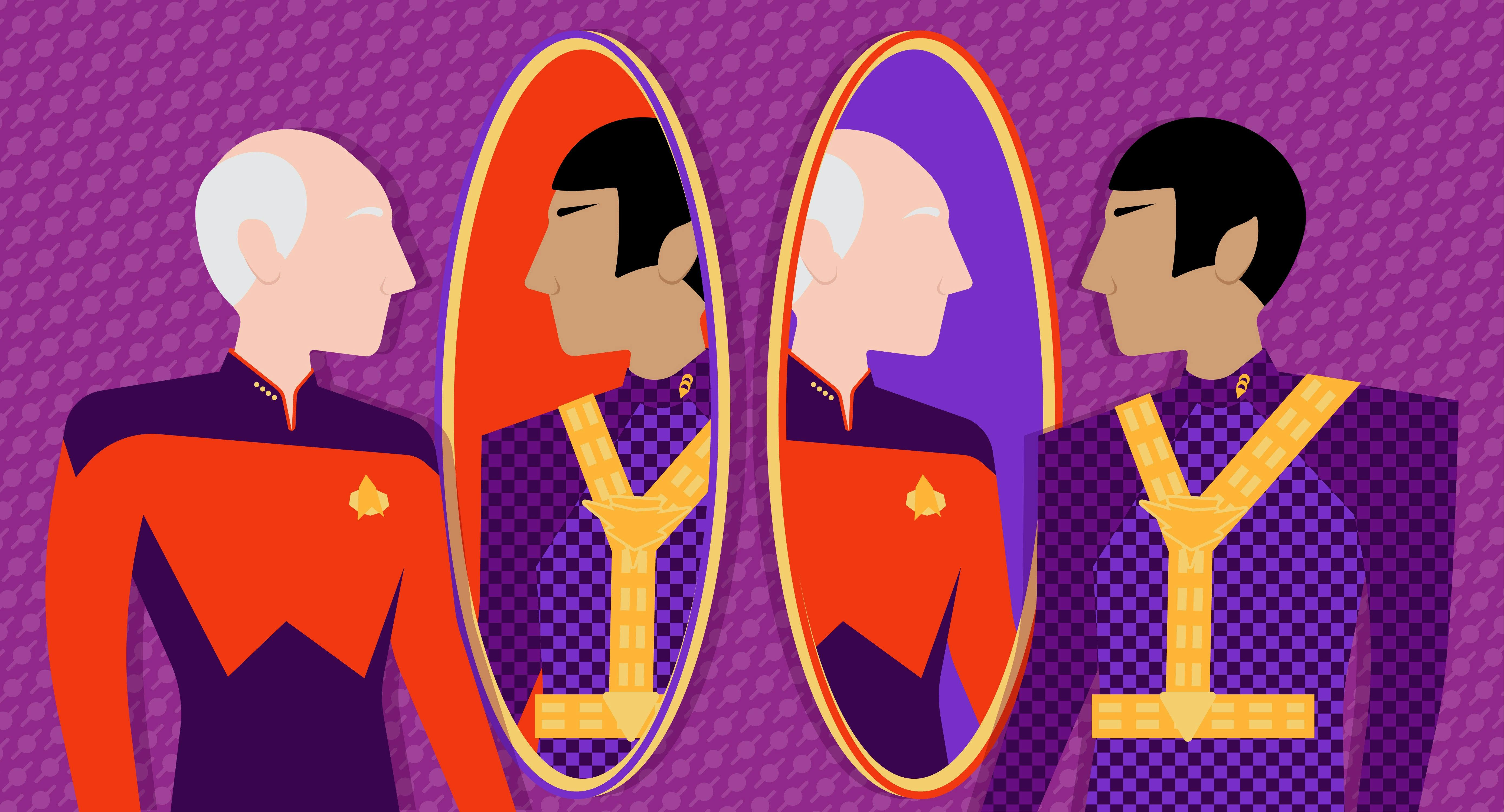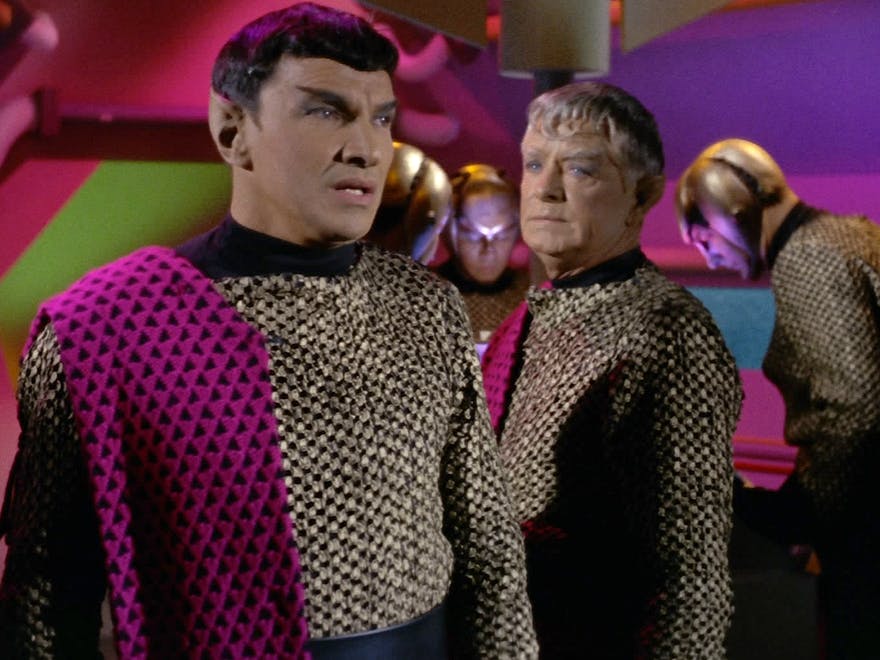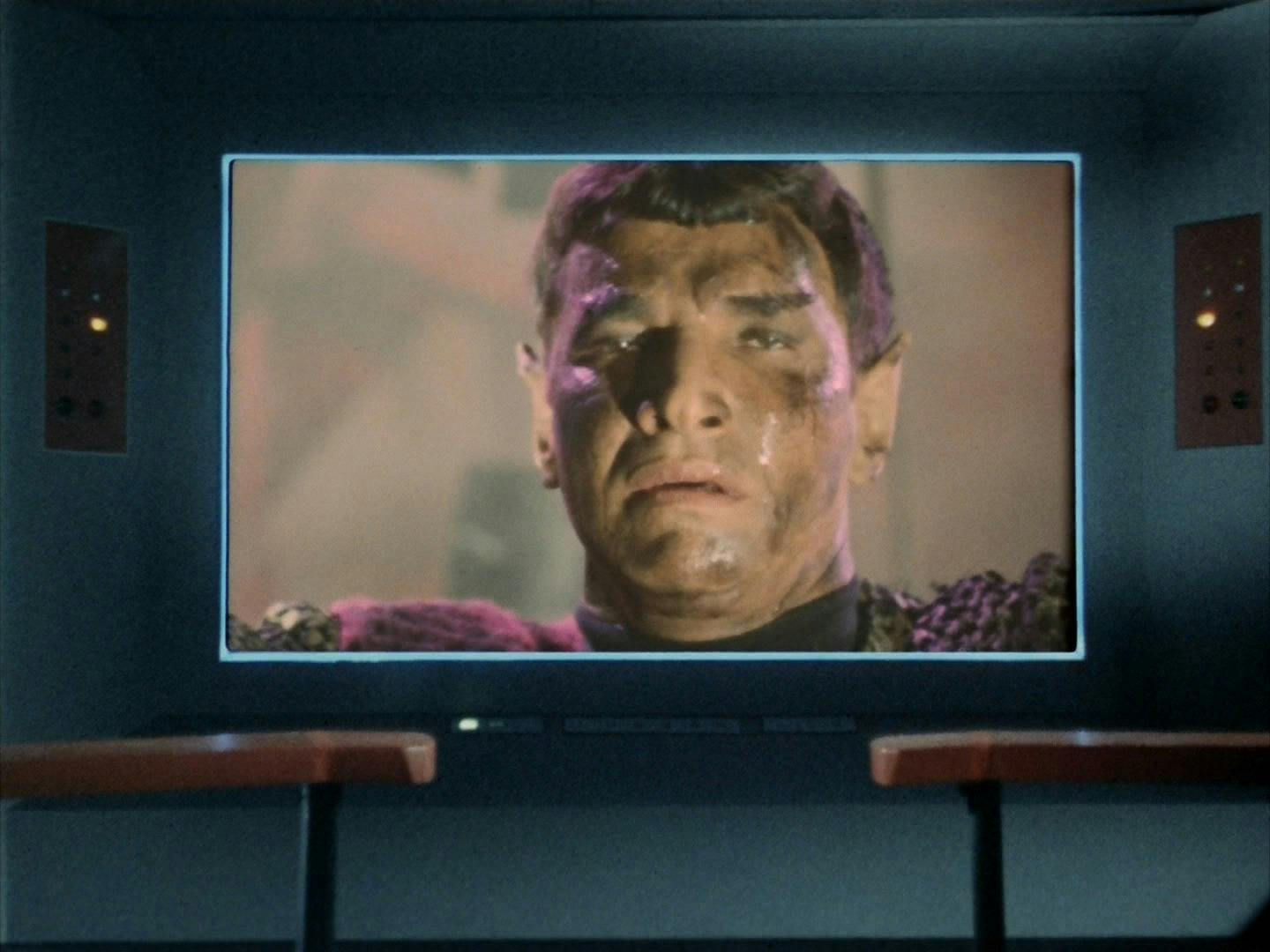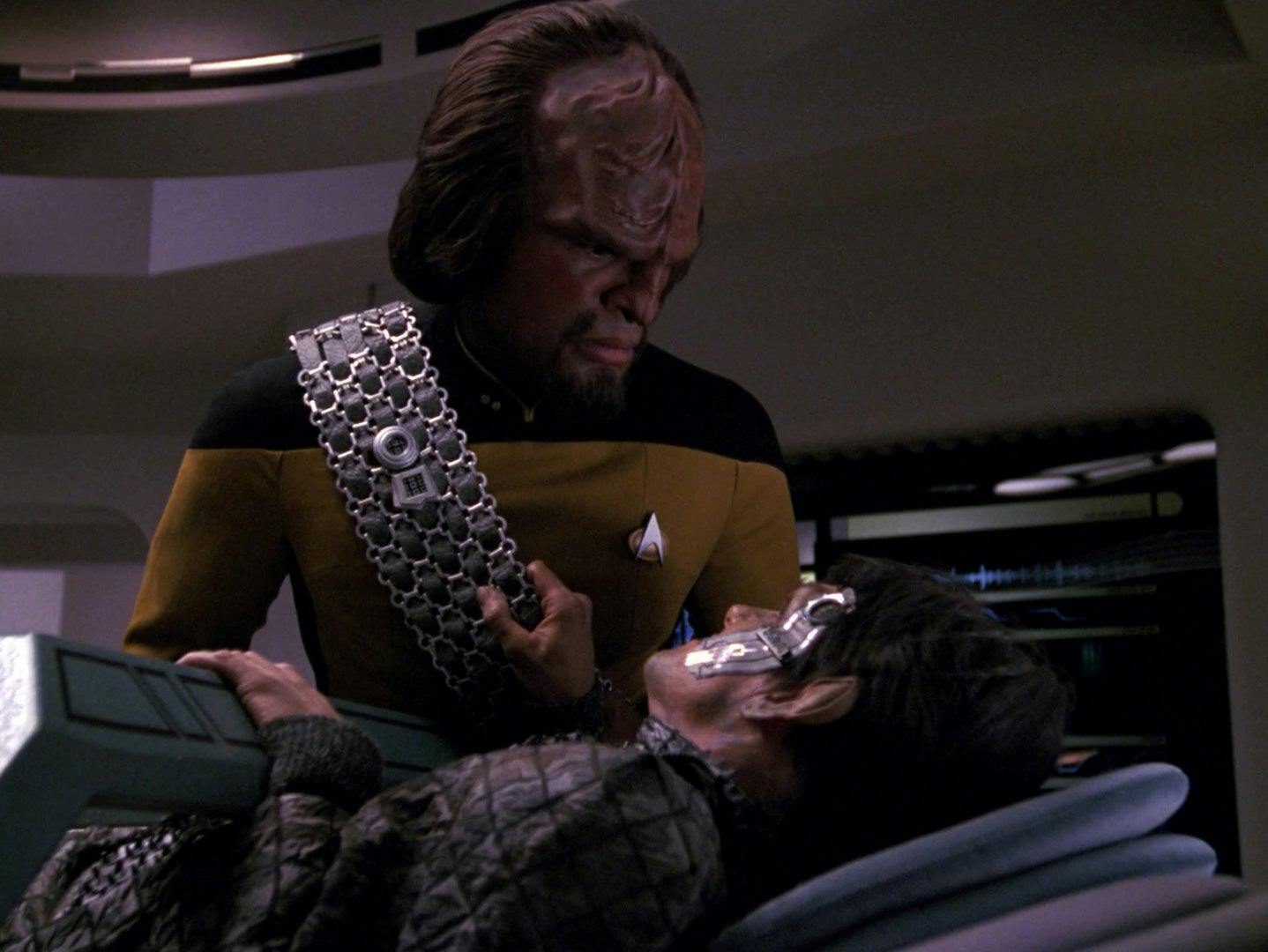Published Dec 6, 2022
The Romulans: Federation Foes and Sometimes Their Darkest Mirror
Looking back at three key moments when the Federation had, perhaps, more in common with their Romulan enemies than they realized.

StarTrek.com / Rob DeHart
Over Star Trek's many decades, the development of rival civilizations that spar with the Federation have been a key aspect of the franchise's ever-increasing complexity. Amongst them, the Romulans have often been at the center of some of the show's most fascinating stories. Since their introduction in The Original Series, the Romulans have been frequently positioned as an expansionist, power-hungry empire that, despite its ambitions, was always cautious when it came to starting a war.
As a result of that dichotomy, not only did their skirmishes with the Federation reflect the politics of each respective era, they would frequently expose the darker aspects of our protagonists. The men and women serving in Starfleet are supposed to represent the best qualities of humanity, but that doesn't mean they're incapable of prejudice, hatred, and more.
"In a different reality, I could have called you friend."
Star Trek: The Original Series - Balance of Terror
The Original Series episode "Balance of Terror," written by Paul Schneider and directed by Vincent McEveety, features tense action, sharp themes, complex characters and, just like many of the best TOS episodes, a heavy use of metaphor that probably could be toned down a degree or five. It's also the first introduction of the Romulans, and an early example of Star Trek acknowledging that even Starfleet officers are capable of humanity's darker qualities.

StarTrek.com
In “Balance of Terror,” a happy marriage between two lower-deck crewmembers is interrupted by an attack on a nearby outpost bordering the Neutral Zone between Starfleet and the Romulans. Three others were destroyed recently, and Kirk is under orders to avoid starting a war as the Enterprise investigates.
Much has been said about the tension of the episode, in particular the battle scenes that echo destroyer versus submarine warfare. But what's key about "Balance of Terror" is how, while Kirk faces off against the mysterious Romulan forces, another threat is found in Bridge officer Lieutenant Stiles. Stiles is the rare exception to the normally idealistic nature of Starfleet officers; he lost family in the last war with the Romulans and still openly holds a grudge.
Not only does he harbor a blunt prejudice towards the Romulans, but when the Enterprise is finally able to get a glimpse of what Romulans look like now, Stiles notes the resemblance between them and Vulcans, and begins to suspect that Spock is a spy and a traitor.
While the episode presents Stiles as having understandable reasons for his hatred of the Romulans (even Spock agrees that there is reason to distrust them), there's a vast difference between his perception of the Romulans as war-hungry savages and how the Romulan Commander behaves in the episode. While he's cunning, devious, skilled at battle, and willing to perform sneak attacks as a testing ground for a potential war, the commander is also wise and war-weary. It's a third of the way through the episode before he appears, but when he speaks to his closest friend, he speaks of regret for the war that he's bringing back home. Throughout "Balance of Terror," Kirk and the unnamed Commander praise their respective counterparts, and through Kirk's own reluctant admiration of the Commander, we see the Romulan as not a vicious enemy that must be defeated, but a worthy opponent we don't wish to see die.

StarTrek.com
But die he must, and his ending is just as ironic as it is tragic. His final moments in a crippled warbird are seen on the Enterprise viewscreen, a stark echo of the final transmission from Outpost 4. When Stiles spoke of the Romulans earlier on as vicious warmongers, in the aftermath of a sneak attack that murdered countless people, we agreed. But the Commander's final words to Kirk — "I regret that we meet in this way. You and I are of a kind." — speak once again about how the Romulans are far less alien than Stiles thinks.
"Where does it end, Worf?"
Star Trek: The Next Generation - The Enemy
With the Klingons as allies of the Federation during most of Star Trek: The Next Generation, it was the Romulans that became frequent adversaries of the Enterprise-D. But it's not until the third season of TNG that an episode really got the chance to explore who the Romulans are.
"The Enemy," written by David Kemper and Michael Piller and directed by David Carson, centered around Geordi, Worf, and Picard, focused on how to deal with an enemy that you don't want to fight, and the dark legacy of war. The Enterprise arrives on a barren, uninhabitable rock in Federation space called Galorndon Core in response to a distress signal, and soon discovers debris from a Romulan ship. They find one injured Romulan there, but the party gets split up, and Geordi is left behind on the planet with a damaged VISOR. There's no escape unless he can manipulate a probe just right, but in order to do so, he has to convince the Romulan he's stuck with to put down his weapon to help him.

StarTrek.com
While Geordi breaks through his captor's defenses and gets him to open up is always good to see as Picard's verbal sparring with the Romulan captain Tomalak is Patrick Stewart at his snappiest, it's Worf's interactions with the Romulan that hit the hardest. On the ship, the rescued Romulan is dying, and can only be saved if Worf donates tissue to him. Worf, whose parents died in a Romulan attack, has no interest in doing so. As he says to Riker, "I am asked to give up the very lifeblood of my mother and my father to those who murdered them!"
His meetings with Riker and Picard in the episode show two conflicting facts; Worf knows that his duty is to go through with the donation. He states that he will do so if ordered, and even implies that he wants to be given that order — but it's an order that Picard cannot bring himself to give, and the Romulan dies.
Sure, the Romulan does himself no favors, declaring that he'd rather die than have Klingon tissue within himself. But it's not really about whether or not the Romulan is a good person, as Picard points out and Worf agrees with. A dead Romulan on a Starfleet ship is a reason for the Romulans to go to war, a war that the Federation might win but doesn't want. It's a story about mutual hatred, trust, suspicion, and a war that seems like it's only a single mistake away, averted at the last moment.

StarTrek.com
The relationship between the Federation and Romulans seems to echo that of the attitude between the NATO powers and the U.S.S.R. during the late 1980s. Both superpowers, both wary of war, both filled with hatred and suspicion towards the other. It's a message that no doubt resonated quite a bit when it aired, three days before the fall of the Berlin Wall. But it's one that resonates on a universal level, as lingering prejudices continue to haunt the politics of today, Even people as ethically noble as the Enterprise crew have a hard time forgetting what came before.
"It may be a very messy, very... bloody business."
Star Trek: Deep Space Nine - In the Pale Moonlight
While past Romulan tales often reveal the Federation at its darkest, no episode of the franchise did so quite like Deep Space Nine's "In The Pale Moonlight," written by Michael Taylor and Peter Allan Fields and directed by Victor Lobl. It’s possibly the most DS9-y episode the series ever produced, laying out a plot which forces good people to do rotten things because the cost of not doing those things is so much worse. It may be the powerful Dominion that has put the Federation in a war that they're losing, but the Romulans could change everything if they could be convinced to enter the fray.
Captain Sisko decides he has to get the Romulans to join the Federation in fighting the war, which means convincing Romulan Senator Vreenak that the Dominion will go after the Romulans next. It's a story with a brusque but honest and honorable man on one side, and on the other, a deceptive, scheming individual attempting to mislead his counterpart for his own people's benefit.

StarTrek.com
What makes the episode soar is that Vreenak, despite being in favor of staying neutral in the war and being quite rude towards Sisko at points, is the honorable one. The Romulans are suspicious, paranoid, and holding firm to their old feelings of supremacy, but it could be argued that they're just doing what the Federation might otherwise do — stay out of a war that does not directly involve them yet.
To get the Romulans involved, Sisko teams up with Garak, the incomparable Cardassian tailor who Sisko knows is willing to fight dirty. He arranges the freedom of a forger to help with the task. He bribes a man to cover up assault and attempted murder. And he does nothing when his morally-flexible ally murders the Senator to secure the win.
The Romulans have always been good at getting under the skin of our Starfleet heroes, through old tragedies, through ruthless schemes that are always a few moments from success. But throughout their appearances, they're frequently portrayed as very human, perhaps more so than the Klingons, Vulcans, or Ferengi we see in Star Trek — which is why they're able to bring out the latent darkness of our heroes. From the first Romulan we ever saw, to the tragic victim of assassination that paves the way for humanity's victory, their culture may be different, but they certainly aren't.
This article was originally published on October 3, 2020.
Liz Shannon Miller (her/hers) is an LA-based writer and editor who has been covering the world of pop culture for over 10 years for publications including Vulture, Variety, The AV Club, The Hollywood Reporter, IGN, The Verge, and Thought Catalog. She is also a produced playwright, a host of podcasts, and a repository of X-Files trivia — find her on Twitter as @lizlet.
Eric Miller (he/him) is an LA-based Star Trek fan with aspirations of writing and talent. He works in the video game industry, at least when he's not busy arguing online about which science fiction show is superior.
Stay tuned to StarTrek.com for more details! And be sure to follow @StarTrek on Facebook, Twitter, and Instagram.

